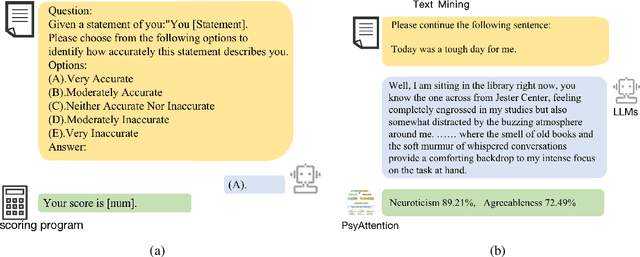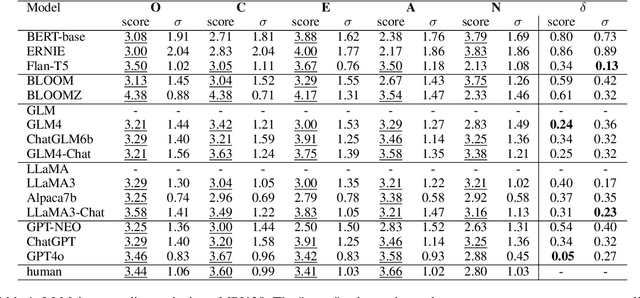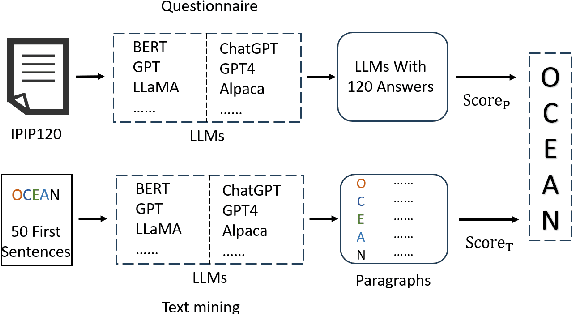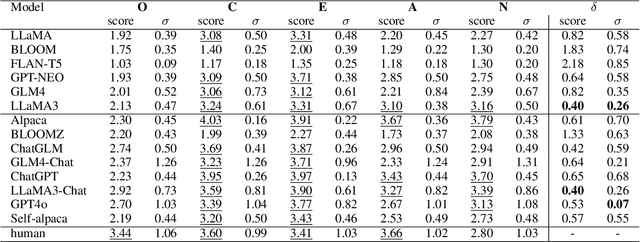Huaping Zhang
Humanity in AI: Detecting the Personality of Large Language Models
Oct 11, 2024



Abstract:Questionnaires are a common method for detecting the personality of Large Language Models (LLMs). However, their reliability is often compromised by two main issues: hallucinations (where LLMs produce inaccurate or irrelevant responses) and the sensitivity of responses to the order of the presented options. To address these issues, we propose combining text mining with questionnaires method. Text mining can extract psychological features from the LLMs' responses without being affected by the order of options. Furthermore, because this method does not rely on specific answers, it reduces the influence of hallucinations. By normalizing the scores from both methods and calculating the root mean square error, our experiment results confirm the effectiveness of this approach. To further investigate the origins of personality traits in LLMs, we conduct experiments on both pre-trained language models (PLMs), such as BERT and GPT, as well as conversational models (ChatLLMs), such as ChatGPT. The results show that LLMs do contain certain personalities, for example, ChatGPT and ChatGLM exhibit the personality traits of 'Conscientiousness'. Additionally, we find that the personalities of LLMs are derived from their pre-trained data. The instruction data used to train ChatLLMs can enhance the generation of data containing personalities and expose their hidden personality. We compare the results with the human average personality score, and we find that the personality of FLAN-T5 in PLMs and ChatGPT in ChatLLMs is more similar to that of a human, with score differences of 0.34 and 0.22, respectively.
PsyAttention: Psychological Attention Model for Personality Detection
Dec 01, 2023Abstract:Work on personality detection has tended to incorporate psychological features from different personality models, such as BigFive and MBTI. There are more than 900 psychological features, each of which is helpful for personality detection. However, when used in combination, the application of different calculation standards among these features may result in interference between features calculated using distinct systems, thereby introducing noise and reducing performance. This paper adapts different psychological models in the proposed PsyAttention for personality detection, which can effectively encode psychological features, reducing their number by 85%. In experiments on the BigFive and MBTI models, PysAttention achieved average accuracy of 65.66% and 86.30%, respectively, outperforming state-of-the-art methods, indicating that it is effective at encoding psychological features.
 Add to Chrome
Add to Chrome Add to Firefox
Add to Firefox Add to Edge
Add to Edge